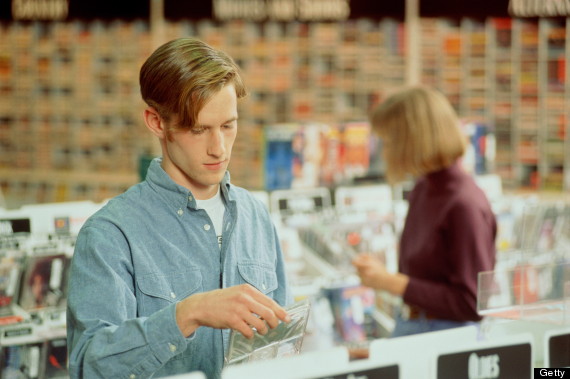
1. "The X-Files," Like The Black Cat, Is Now 20 Years Old
Nostalgia for the 1990s, that decade of pre-9/11 innocence, funky clothes and slow dial-up connections, is currently in full swing. No longer confined to Internet memes, the sentiment has broken out into the real world, resurrecting *NSYNC, dayglo platform sneakers, Arsenio Hall and all manner of other bygone pop culture icons. Indie rock bands like Girls Against Boys and Shudder to Think are playing again. There's a new biography of Elliott Smith. Who knows what may come back to life next -- a zombie Seinfeld, perhaps, or Matt LeBlanc.
With the '90s so ubiquitous, it's a bit of a shock to realize that this week marks the 20th anniversary of the premiere of "The X-Files." In Grantland, Brian Phillips has a wonderful essay reflecting on the series, its place in our culture and its significance to him growing up in small-town America. "What I remember first about that year is the darkness of the nights. We would pile into a car and if we all had late enough curfews we would drive out of town, past the last light, on some country road we didn't know the name of, fields and stars as far as we could see," he writes.
Such darkness, of course, can give rise to all sorts of monsters and evil spirits, and in the world of "The X-Files," small-town America is a hotbed of the paranormal. "The strangeness and isolation of small towns was a theme the series returned to again and again," Phillips writes. But his image of driving at night down a country road suggests another theme as well: It calls to mind the classic Volkswagen commercial (which debuted in December 1999, a fitting punctuation mark on the decade) in which a group of teenagers drives a Cabrio convertible through the darkness, as Nick Drake softly croons "Pink Moon." They raise their hands to the sky and gaze in awe at the stars, bound together by this secret, shared experience and the magic of this mysterious world.
This, too, is the world of "The X-Files" -- not simply a world of conspiracies, paranoia and anxiety, of small-town horrors and shadowy bureaucracies, but also of wonder, discovery and faith. "The truth was somewhere," Phillips writes, "and perhaps it was mundane and perhaps it was magical, but then when you are 17 in a small town, magic is never very far out of reach." It's easy to feel nostalgic about that.
Bonus: In Aeon magazine, Paul Gilster writes about how "interstellar archaeologists" are scouring the heavens, not for UFOs or signs of alien life, but for the ruins of ancient alien civilizations. Because of the time it takes for light from distant stars to reach us, looking deep into space means looking far into the past. But because they're looking for civilizations far more advanced than our own, scientists must also imagine what these alien cultures may have accomplished. They look for swarms of spacecraft parked in orbit, antimatter furnaces, asteroid mining operations, and more. "Interstellar archaeologists are looking for evidence of engineering on scales that dwarf our own," Gilster writes. "They assume that civilisations eventually build technologies capable of exploiting the energy resources of entire stars." It's a fascinating and thought-provoking read.

2. Hilary Rosen's Regret
Before Spotify, before Pandora, before iTunes, there was Napster, the groundbreaking peer-to-peer file-sharing service that reshaped the music industry. In Fortune, Richard Nieva interviews some of the central players in Napster's history, from the engineers who built it to the record execs and lawyers who fought it, to get the inside story of the company's rise and fall.
In many ways, it's a typical startup tale -- young kids, fuelled by Red Bull, coding all day and night out of a modest office building in San Mateo, Calif. As the company grew, users flocked to the service, and the team scrambled to keep up with demand. "It was just a constant battle," says Eddie Kessler, a Napster engineer. "We would buy twice as many servers, and we would wipe our brows and say, 'Okay, now we've bought ourselves some time.' And then three or four hours later we were over capacity again." The company boasted 70 million users at its peak.
Napster's young founders believed that musicians and record labels would want to work with them. "[Shawn Fanning] felt pretty strongly that if he built something really good and really cool, that the artists and record labels would appreciate the distribution mechanism and the amount of data you could pull from it -- understanding who's listening to what, who's engaged with what content," says Ali Aydar, Napster's senior director of technology. "He wasn't focused on the legality. He felt like once he built something really good, any issues would solve themselves."
Of course, those issues didn't solve themselves, and ultimately they led to the company's demise. Still, even Napster's opponents seem nostalgic. "I guess I would be surprised if the overarching sentiment for a retrospective of Napster wouldn't be regret, from all sides," Hilary Rosen, then chair of the Recording Industry Association of America, tells Nieva. "Many would argue nothing has been as cool since, right?

3. CD Racks
The defeat of Napster was a short-lived victory for the record industry. Today, digital downloads and streaming services are increasingly popular (in HuffPost, Zach Carter and Jason Cherkis have a good, deep look at the relationship between these new startups and the record labels).
Brick-and-mortar record stores, meanwhile, have all but disappeared from the retail landscape. In the Washington City Paper, Harold Stallworth writes about Kemp Mill records, the king of the D.C.-area music retail scene in the '80s and '90s. In its heyday, the chain boasted some three dozen locations. Now, thanks to poor business decisions and the changing retail landscape, only a single store remains.
That store has managed to eke out an existence by focusing on CDs of live go-go performances, and by catering to its largely older clientele. “Today I did a special order for a guy that came in with an Amazon page he printed out at home,” says Sam Lloyd, one of the store's owners. “The CD would have only cost him $14.99 plus shipping to order himself. But he says ‘I don’t know how to do it.’ I tell him straight up that it’s going to be an extra $10 for our time and energy, and he says ‘fine.’ We have that kind of customer base.”
Whether the store will remain in business much longer is an open question, however. Its lease is up next year.
4. Want A Bigger Penis?
OK, so perhaps no one is actually nostalgic for emails touting cheap Viagra or appealing for money to help some stranded African prince. But at least they were easy to spot, and delete. Yet as Kevin Driscoll points out in the Los Angeles Review of Books, in a review of Finn Brunton’s “Spam: A Shadow History of the Internet,” spammers are a crafty bunch. As spam-blockers and smart filters emerged to guard our inboxes, spammers evolved as well. "More cockroach than virus," Driscoll writes, "spam adapts and stubbornly survives."
These days, the definition of spam seems particularly ambiguous. "How are we to differentiate the 'sponsored tweets' injected into our feeds by Twitter from the 'spam tweets' sent to us periodically by third-party spam bots?" Driscoll asks. "What is the difference between using TiVo to skip a television commercial and using ad-blocking software to remove the advertisements from Facebook?"
"So far, users seem to accept some amount of advertising in exchange for free services," Driscoll writes, "but it is not clear that they will continue to feel this way as online advertisers become more aggressive and targeted advertising becomes more invasive."

5. Life Was Simpler Then
"Spam, in all of its myriad forms," Driscoll writes, "is essentially an attempt to capture and redirect a user’s attention, if only momentarily." One could broaden that observation to include the entire digital world in which we now live. We are constantly interrupted by a never-ending stream of tweets, alerts, text messages, emails and status updates. We feel naked without our phones in our hands, hitting refresh again and again.
In the London Review of Books, Rebecca Solnit laments the end of the pre-Internet age, when time moved more slowly, personal connections seemed stronger, and people had the mental capacity to think big thoughts. "There is so much information that our ability to focus on any piece of it is interrupted by other information, so that we bathe in information but hardly absorb or analyse it," Solnit writes. "Data are interrupted by other data before we’ve thought about the first round, and contemplating three streams of data at once may be a way to think about none of them."
Solnit doesn't deny the benefits technology offers. "I have reconnected via Facebook to old friends who might otherwise never have resurfaced, and followed grassroots politics and movements," she writes. But she's also wasted a lot of time that she could have spent "going deeper, with a book, a film, a conversation, or even a walk or a task."
"I forget practical stuff all the time, but I also forget to look at the distance and contemplate the essential mysteries of the universe and the oneness of all things," Solnit writes. (These days, those teens in the Volkswagen Cabrio would probably be too busy checking their iPhones to gaze in silent wonder at the stars. Unless they're using SkyView.)
The truth is in there.
Have you read a good longform feature lately? Email me at sasha@huffingtonpost.com. You can also follow me on Twitter.
